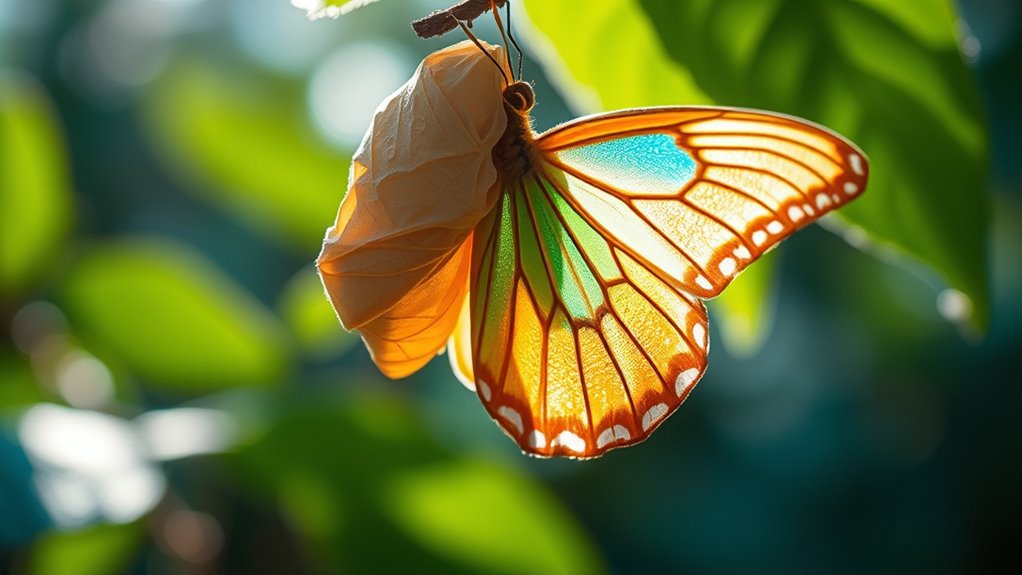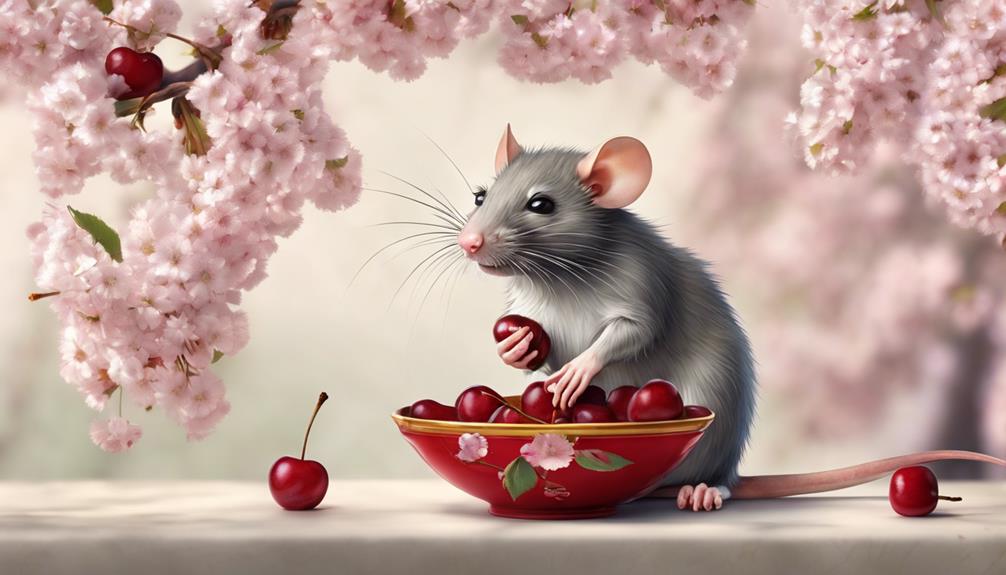The life cycle of a butterfly is an amazing journey that's more than just emerging from a cocoon. It starts with eggs laid on host plants, then hatches into a caterpillar that grows through several stages by shedding its skin. After reaching a certain size, it enters a pupal stage within a chrysalis. Finally, the adult butterfly emerges, ready to continue the cycle. There's so much more to discover about this fascinating transformation.
Key Takeaways
- The butterfly life cycle consists of four stages: egg, caterpillar (larva), pupa (chrysalis), and adult butterfly, each crucial for survival.
- Metamorphosis is a remarkable process where the caterpillar transforms into a butterfly, showcasing tissue reorganization within the chrysalis.
- Caterpillars grow rapidly, feeding on host plants and shedding their skin multiple times before entering the pupal stage.
- The adult butterfly emerges from the chrysalis, symbolizing beauty and the continuation of the life cycle, inspiring curiosity and appreciation.
- Each stage of the butterfly's life cycle plays a vital role in its evolution and ecological significance, highlighting nature's interconnectedness.
The Academy of Natural Sciences of Drexel University
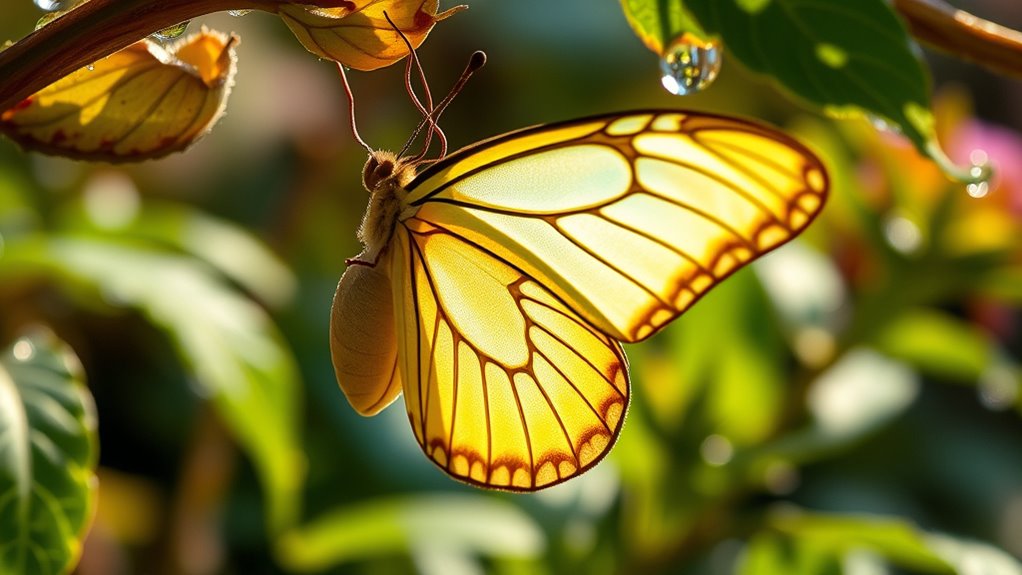
The Academy of Natural Sciences of Drexel University offers a vibrant array of exhibits that make learning about the natural world both engaging and accessible.
You'll find fascinating displays, including the online exhibits dedicated to the butterfly life cycle. These resources guide you through complete metamorphosis, from larva to chrysalis and finally to the adult stage.
The Academy emphasizes interactive science learning, allowing you to explore concepts hands-on, whether in-person or from home.
The Academy fosters hands-on exploration of science, making learning accessible both in-person and online.
Don't miss unique exhibits like "Ice Dinosaurs" and "Academy Unscripted," which deepen your understanding of natural history and environmental science.
With educational opportunities around every corner, the Academy truly inspires curiosity and enriches your knowledge of the diverse life forms that share our planet.
Butterfly Life Cycle For Educators
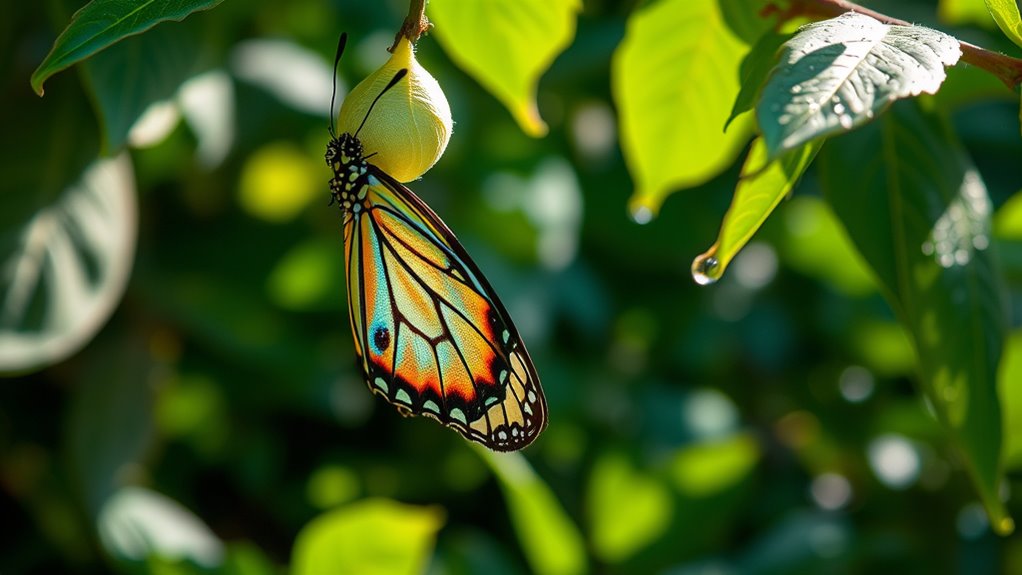
Exploring the butterfly life cycle offers educators a fantastic opportunity to engage students with the wonders of nature.
By introducing the four stages in the life of a butterfly—egg, caterpillar, pupal stage, and adult butterfly—you'll spark curiosity and excitement.
Here are some emotional takeaways for your students:
- Witness the miracle of metamorphosis.
- Feel the thrill of a tiny caterpillar growing immensely.
- Discover the mystery of the pupal stage within the chrysalis.
- Appreciate the fleeting beauty of an adult butterfly's life.
- Understand the importance of each stage in nature's cycle.
Encourage discussions around these topics, and watch your students develop a deeper appreciation for the butterfly life cycle and its significance in our ecosystem.
The Butterfly Life Cycle Explained

In the butterfly life cycle, it all starts with the egg development process, where female butterflies lay their eggs on host plants.
You'll see these tiny eggs hatch into caterpillars, marking the beginning of a remarkable metamorphosis.
As you follow each stage, from larva to pupa, you'll witness the incredible transformation that leads to the emergence of a beautiful adult butterfly.
Egg Development Process
While you might think of butterflies as beautiful creatures fluttering around, their life begins in a much simpler form: an egg.
These tiny butterfly eggs, roughly the size of a pin, are laid on specific host plants in clusters, ensuring food for the soon-to-hatch caterpillars. The gestation period lasts about one to two weeks, during which the eggs develop inside protective shells, nourished by a yolk.
- Some species lay up to 500 eggs at once
- Each egg shape is unique to its species
- The eggs' delicate nature belies their strength
- Hatching marks the start of a caterpillar's journey
- A new generation emerges, ready for metamorphosis
This early stage is crucial for the survival of the next generation.
Metamorphosis Stages Explained
As the butterfly's life unfolds, it progresses through four distinct stages: egg, larva (caterpillar), pupa (chrysalis), and adult butterfly. Each stage of metamorphosis plays an essential role in the butterfly's development.
Initially, tiny eggs are laid on host plants, hatching into caterpillars within one to two weeks. These caterpillars focus on eating and growing, shedding their skin multiple times as they increase in size, sometimes up to 1,000 times their original weight.
Next, they enter the pupal stage, transforming within a protective chrysalis. This period involves significant cellular reorganization, taking several weeks to months.
Finally, the adult butterfly emerges, ready to mate and continue the cycle, though many species live just a few weeks.
Understanding Metamorphosis and Phases of Change
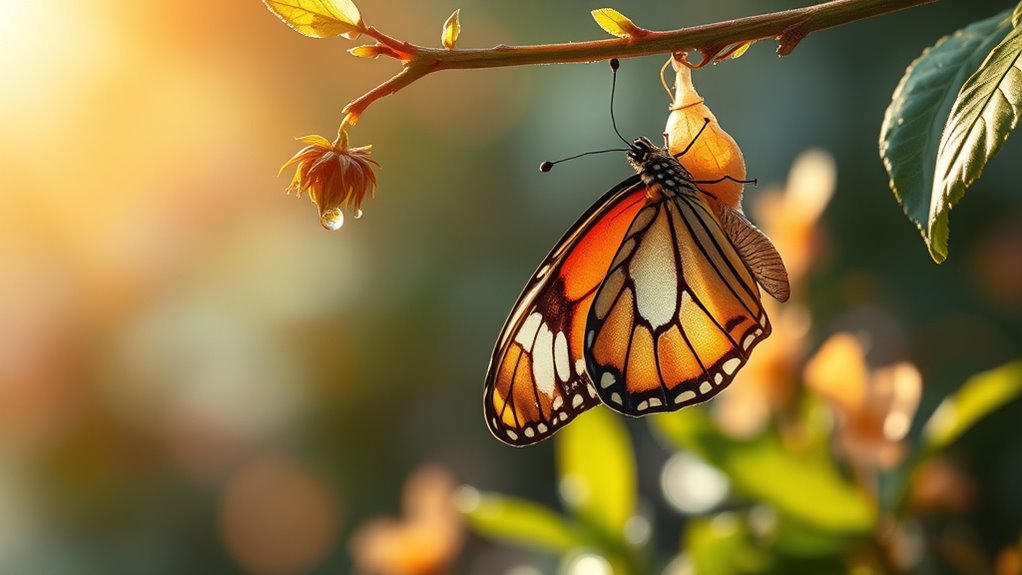
Metamorphosis is a fascinating process that transforms a butterfly from an egg into a beautiful adult, showcasing four distinct stages: egg, larva, pupa, and adult. Each phase reveals a remarkable journey filled with change and adaptation.
- Witness the caterpillar's relentless feeding, growing a thousand times its original size.
- Experience the mystery of the chrysalis, where tissues break down and reorganize.
- Feel the anticipation as the adult butterfly emerges with stunning wings.
- Appreciate the beauty of nature's intricate design in the life cycle.
- Recognize the importance of each stage for survival and evolution.
Understanding these phases of metamorphosis deepens your appreciation for the delicate balance of life that butterflies embody.
Community Support and Personal Transformation
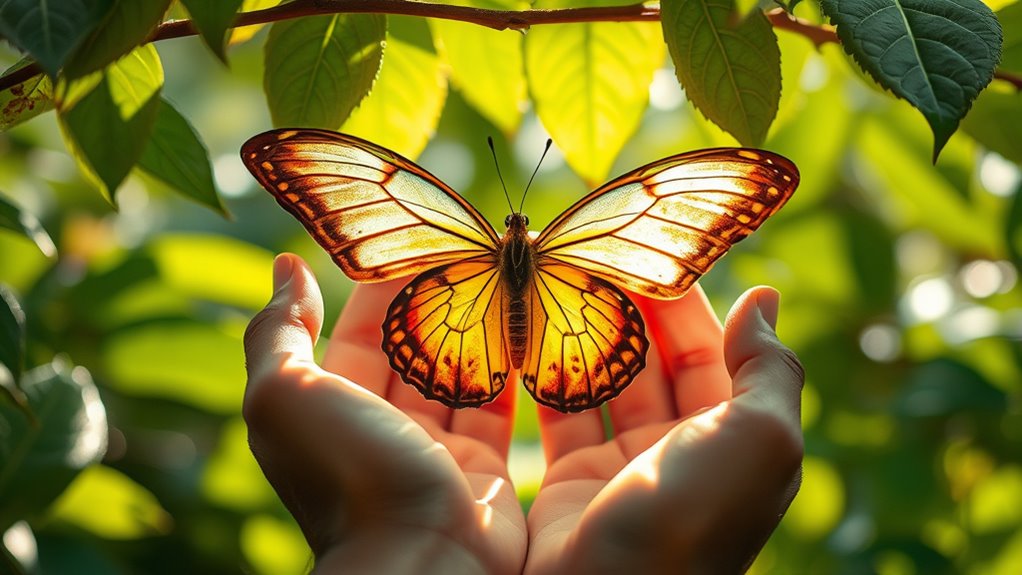
Community support is essential during times of personal transformation, especially when you're maneuvering significant life changes. Engaging with others who've faced similar challenges fosters healing and resilience through shared experiences. Online platforms and meet-up groups create spaces for connection, allowing you to navigate changes together and feel understood.
Participating in support groups for survivors of narcissistic abuse is one way to find community and healing during these transformative times.
| Aspect | Benefits | Examples |
|---|---|---|
| Shared Experiences | Empathy and comfort | Support groups, forums |
| Healing | Process emotions collectively | Workshops, retreats |
| Resilience | Strength in community | Online challenges, meet-ups |
Participating in community support not only enhances your grieving process but also leads to profound insights, ultimately guiding you toward personal transformation.
Practical Steps for Moving Forward and Insights on Change Cycles

Maneuvering through change can feel overwhelming, but understanding the phases of transformation can make the journey smoother.
Just like butterflies, your metamorphosis requires embracing each stage with grace.
Here are some practical steps to help you move forward:
- Create vision boards to clarify your goals.
- Engage in new activities to spark joy and purpose.
- Accept doubt and uncertainty as catalysts for growth.
- Lean on community support for resilience and shared experiences.
- Commit to continuous learning to empower your journey.
- Recognize that soulmate angel numbers can signify readiness for love and personal growth during transformative times.
Frequently Asked Questions
What Do Butterflies Do After They Come Out of Their Cocoon?
After you emerge from your cocoon, you'll hang upside down for up to two hours.
This allows your wings to dry and expand fully, which is essential for flight. You'll pump fluid into your wing veins, preparing for your first flight.
Once your wings are ready, your focus shifts to finding a mate.
After mating, you'll lay eggs on suitable plants, starting the life cycle anew for the next generation.
What Is the Life Cycle of a Butterfly Step by Step?
The life cycle of a butterfly unfolds in four main steps.
First, you'll see eggs laid on host plants.
Then, the eggs hatch into caterpillars, which munch on leaves and grow rapidly.
After reaching a certain size, they form a chrysalis, where they undergo a dramatic transformation.
Finally, you witness the emergence of a beautiful adult butterfly, ready to continue the cycle by finding a mate and laying more eggs.
What Is the Moral of the Story the Butterfly and the Cocoon?
The moral of the story of the butterfly and the cocoon is all about embracing struggle.
You see, the butterfly needs to fight its way out of the cocoon to strengthen its wings for flight. This teaches you that facing challenges fosters growth and resilience.
Sometimes, letting others navigate their own difficulties is essential for their development.
What Are the 4 Stages of Metamorphosis?
You mightn't believe it, but every butterfly you see started as an egg, just a tiny speck on a leaf.
After hatching, it becomes a voracious caterpillar, munching its way to growth.
Then, it transforms into a pupa, undergoing a remarkable change inside a chrysalis.
Finally, it breaks free as an adult butterfly, ready to flutter around and continue the cycle.
Isn't nature's metamorphosis fascinating?
Conclusion
In exploring the butterfly's life cycle, you uncover not just its transformation but also the potential for your own personal growth. Just as a caterpillar evolves through distinct phases, you can embrace change and emerge stronger. Visualizing this journey can help you navigate your own metamorphosis, reminding you that every stage, no matter how challenging, holds the promise of beauty and renewal. So, take a leap of faith—your wings are waiting to unfurl!
